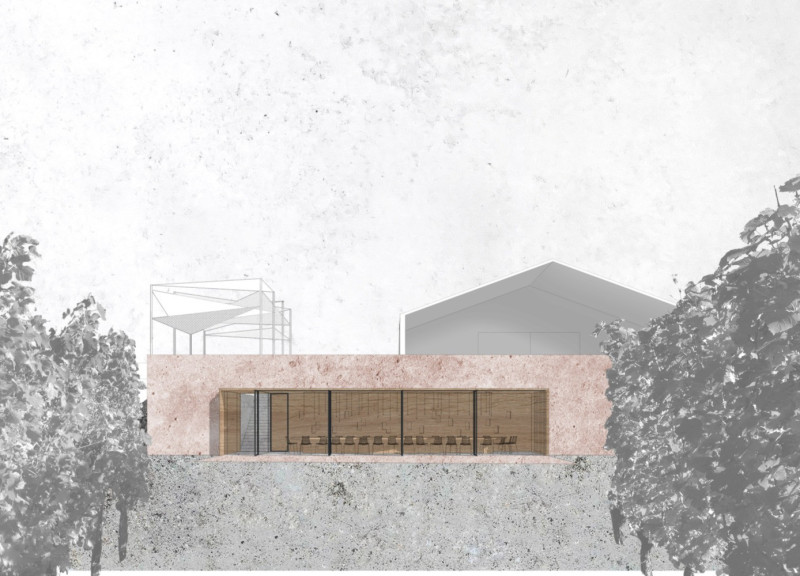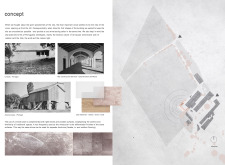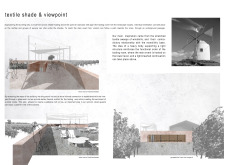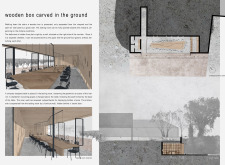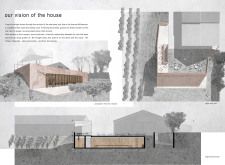5 key facts about this project
The design is located in a scenic vineyard area, where it serves to enhance the experience of wine tasting. The concept focuses on integrating the building with the landscape while ensuring that views of the vineyards remain clear. This approach emphasizes the natural characteristics of the site and allows for a meaningful connection to the environment.
Integration with Landscape
The building is carefully set into the ground, making it blend more harmoniously with the surrounding hills and the natural light. By lowering the structure, the design creates a close relationship with the vineyard, promoting a feeling of connection with the land. A glass wall acts as a link between the inside and outside, maximizing the daylight that enters the space and creating a smooth transition from the interior to the exterior.
Materiality and Aesthetic
The base of the structure is made from stone, which comes from local sources and reflects traditional building methods. This choice helps establish a sturdy foundation while connecting to the regional landscape. Meanwhile, lighter materials are used for other parts of the design, adding comfort and a friendly feel. The mix of materials results in a design that is both functional and maintains a sense of place.
Spatial Organization
An open staircase leads to a shaded area that visually separates the tasting room from the surrounding landscape. This setup creates spaces for quiet reflection on the roof while also accommodating larger gatherings. The tasting room itself is adaptable, with large openings that allow for fresh air and a smooth flow between the indoors and outdoors.
Interior Details
The interior is designed to encourage social interaction. A specially shaped table takes center stage in the tasting room, moving away from conventional shapes to allow for flexible use. Above, a lighting fixture shaped like grapes adds to the atmosphere. Recessed compartments in the walls display wine bottles, providing both practicality and elegance.
Sunlight filters through the staircase, creating natural ventilation that enhances the comfort of the tasting room. The clever use of light and airflow deepens the relationship between the space and its environment, inviting visitors to connect with the vineyard and immerse themselves in the winemaking experience.


